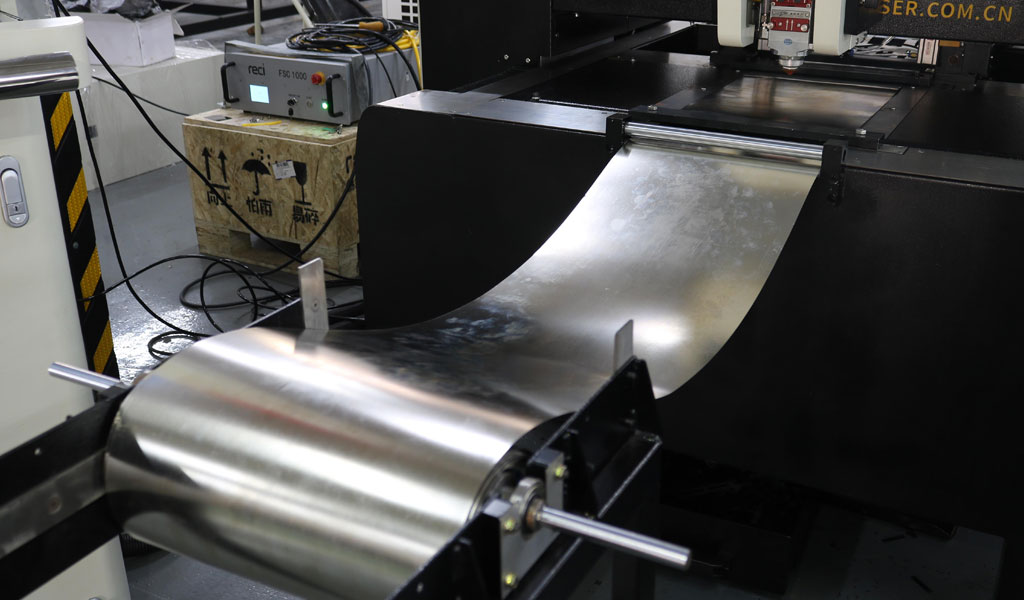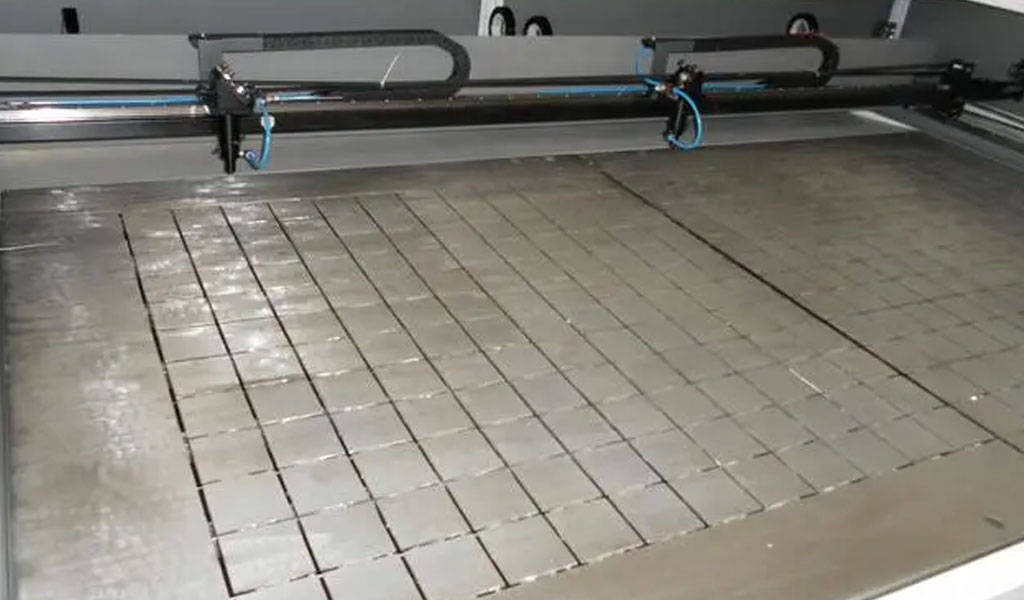The rapid evolution of electronic devices has ushered in an era demanding smaller, lighter, and more efficient components. To meet these demands, manufacturers have turned to cutting-edge technologies, and one such revolutionary technique is micro laser cutting. This advanced method has emerged as a cornerstone in the production of intricate electronic components, offering unparalleled precision and versatility in creating micro-scale features.

Precision at its Finest
Micro laser cutting involves the use of focused laser beams to precisely carve or ablate materials at a microscopic level.
The technique allows for the creation of intricate patterns, tiny holes, or precise cuts in various materials used in electronics, such as metals, ceramics, polymers, and even semiconductors. The ability to work with diverse materials while maintaining exceptional accuracy has made micro laser cutting indispensable in the electronics industry.
Applications in Electronics
Micro laser cutting has found diverse and indispensable applications across various sectors within the electronics industry due to its precision and versatility. Here’s an in-depth look at how this cutting-edge technology is revolutionizing electronic component manufacturing:
Printed Circuit Boards (PCBs)
Micro laser cutting plays a pivotal role in producing intricate and complex PCBs. It enables the precise removal of copper layers to create circuit traces, vias, and interconnections. The ability to cut through various substrates, including FR-4 (Flame Retardant 4), ceramic, and flexible materials, helps in achieving miniaturization and high-density interconnects in modern electronic devices.
Microelectromechanical Systems (MEMS)
In the realm of MEMS manufacturing, micro laser cutting is instrumental in creating miniature structures and components. It facilitates the precise machining of silicon, polymers, and other materials used in MEMS devices. This technology aids in the production of microsensors, actuators, accelerometers, and gyroscopes, allowing for improved sensitivity and functionality in these tiny systems.
Semiconductor Manufacturing
Micro laser cutting finds applications in semiconductor manufacturing processes, particularly in wafer dicing and singulation. It enables precise cutting of semiconductor wafers into individual chips with minimal kerf width, ensuring higher yields and optimizing the use of expensive materials. Additionally, laser cutting assists in creating microstructures within semiconductor devices, enhancing their performance and functionality.
Microfluidic Devices
The production of microfluidic devices for lab-on-a-chip applications heavily relies on micro laser cutting. It facilitates the fabrication of intricate channels, valves, and chambers on various substrates such as glass, polymers, and silicon. These microfluidic devices enable precise manipulation and analysis of tiny fluid volumes, revolutionizing fields like biomedical diagnostics, drug discovery, and chemical analysis.
Smartphone and Consumer Electronics Components
Micro laser cutting is indispensable in manufacturing components for smartphones and other consumer electronics. It assists in creating miniature features like speaker grilles, microphone holes, and camera module components with exceptional precision. Its ability to work with diverse materials including metals, ceramics, and polymers ensures the production of high-quality, small-scale components that are essential for modern electronic devices.
Medical Devices and Sensors
In the medical laser cut industry, micro laser cutting contributes significantly to the production of miniaturized medical devices and sensors. It enables the fabrication of intricate components for implantable devices, micro-scale surgical tools, and biosensors. The precision offered by micro laser cutting is crucial in ensuring the functionality and reliability of these devices, making them essential for medical advancements.
Miniature Antennas and RF Components
The creation of miniature antennas and radio frequency (RF) components for wireless communication systems heavily relies on micro laser cutting. This technology allows for the precise shaping and modification of materials like metals and ceramics, enabling the production of high-performance antennas and RF circuits essential for modern communication devices.
Micro laser cutting has become an indispensable tool in the electronics industry, enabling the creation of miniaturized, intricate, and high-performance components across a wide range of applications. Its precision, versatility, and ability to work with various materials have transformed the way electronic devices are manufactured, contributing to advancements in technology and paving the way for smaller, more efficient, and sophisticated electronic systems.
Advantages Over Conventional Methods
Micro laser cutting offers several significant advantages over conventional methods in the manufacturing of electronic components. These advantages include:
1. Unmatched Precision
Micro laser cutting provides unparalleled precision at the micro-scale level. The focused laser beam can achieve incredibly small feature sizes with high accuracy, allowing for the creation of intricate patterns, precise cuts, and fine details that are unattainable with conventional methods. This precision is crucial for manufacturing modern miniaturized electronic devices.
2. Reduced Material Stress
Unlike some traditional methods like mechanical cutting, micro laser cutting is a non-contact process. This minimizes material stress during the cutting operation, preserving the integrity of delicate materials commonly used in electronics manufacturing. The absence of physical contact reduces the risk of deformation, cracks, or damage to the components, ensuring higher quality and reliability.
3. Versatility in Material Processing
Micro laser cutting is versatile and adaptable to a wide range of materials used in electronics, including metals, ceramics, polymers, and semiconductors. This versatility allows manufacturers to work with diverse materials without the need for changing tools or setups, streamlining the manufacturing process and enabling the production of complex multi-material electronic components.
4. Fine and Clean Cutting
Laser cutting produces precise and clean cuts without leaving behind burrs or producing debris. This characteristic is particularly beneficial in electronic manufacturing, where cleanliness and accuracy are paramount. The absence of post-processing steps to remove burrs or contaminants streamlines the production process and ensures the integrity of the electronic components.
5. High Speed and Efficiency
Micro laser cutting is a high-speed process that significantly enhances manufacturing efficiency. The rapid and precise nature of laser cutting enables faster production rates compared to many conventional methods, contributing to increased throughput without compromising on quality. This efficiency is crucial for meeting the demands of large-scale electronics production.
6. Contactless Processing
The non-contact nature of laser cutting eliminates the need for physical tooling, reducing wear and tear on equipment. Additionally, it minimizes the risk of contamination from tool contact, making it particularly suitable for manufacturing sensitive electronic components that require a high degree of cleanliness and purity.
7. Customization and Complexity
Micro laser cutting allows for intricate and complex designs with ease. It enables the production of highly customized and tailored electronic components, accommodating specific design requirements without compromising precision or quality. This capability to create intricate designs benefits the development of next-generation electronic devices with unique functionalities.
The advantages of micro laser cutting over conventional methods position it as a cornerstone technology in the electronics industry. Its precision, versatility, cleanliness, and efficiency are instrumental in meeting the ever-evolving demands for smaller, more powerful, and intricately designed electronic components, driving innovation and advancements in electronic device manufacturing.
Future Prospects,Challenges and Innovations
Despite its remarkable advantages, micro laser cutting encounters challenges related to heat-affected zones, debris, and process speed. To address these challenges, ongoing innovations focus on optimizing laser parameters, developing novel laser sources, and integrating advanced cooling mechanisms. Additionally, advancements in automation and control systems ensure higher precision and faster production rates.
The future of micro laser cutting in electronics appears promising. Continued research and development efforts aim to further enhance precision, reduce production costs, and broaden the range of applicable materials. Integration with other advanced technologies like AI-driven process optimization and robotics is anticipated to revolutionize manufacturing in the electronics industry.
Conclusion
In conclusion, micro laser cutting stands as a revolutionary technology at the forefront of electronic component manufacturing, offering a myriad of advantages over conventional methods. Its unparalleled precision, versatility in material processing, and efficiency have transformed the landscape of electronics production.
The ability of micro laser cutting to achieve micrometer-level precision enables the creation of intricate designs and precise cuts critical for the development of miniaturized electronic devices. Moreover, its non-contact nature minimizes material stress, ensuring the integrity of delicate components while producing clean, burr-free cuts.
The versatility of micro laser cutting across various materials, coupled with its high-speed and efficient production capabilities, has made it indispensable in manufacturing printed circuit boards (PCBs), microelectromechanical systems (MEMS), semiconductor components, microfluidic devices, and more. This technology has found applications in smartphones, micro laser cut for medical devices, communication systems, and numerous other electronic devices, driving innovation and enabling the production of smaller, more efficient, and sophisticated electronic components.

As research and development continue to refine laser technologies, optimize processes, and expand material capabilities, the future of micro laser cutting in electronics appears promising. Its ongoing evolution is anticipated to further enhance precision, reduce production costs, and enable the manufacturing of even smaller and more complex electronic devices, shaping the future of technology in diverse industries. With its remarkable advantages and potential for advancements, micro laser cutting remains a cornerstone in advancing electronics manufacturing towards greater precision, efficiency, and innovation.
